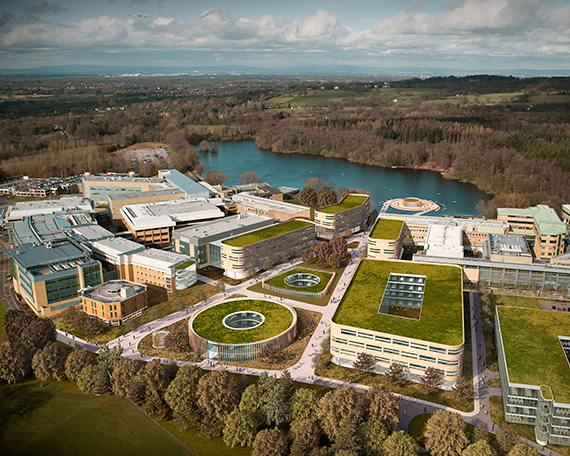Six months ago, sentiment for the life science sector in the UK and the impact on real estate was very much being driven by the uncertainty around Brexit. This remains, of course, but assessing any real estate sector obviously now requires a Covid-19 “lens” to be applied.
With the global hunt on for a cure, there has been a significant increase in the level of interest from all corners of the market to understand the future role of this sector, but importantly where it will grow geographically.
The UK is very good at discovery within a life science context. Research and development capabilities have grown significantly, and the presence of global companies in the country is noteworthy. To illustrate this point, the latest data from the European Commission regarding the top 2,500 global R&D spending companies is enlightening, albeit not just for the life science sector. For the top 1,000 in Europe, of the total, 273 are in the UK, so more than 27% of the European total. In comparison, 112 are in France and 218 based in Germany. R&D, whether in pharmaceuticals, food or automobiles, demands a specific type of real estate and proximity to a highly skilled pool of labour.
For the life science sector, the question to answer here is how is it distributed across the UK? There are pockets of life science companies throughout the country, and the best way to identify the distribution is to review the geographical location of capital raising in the sector in the recent past.
On a regional basis, it is unsurprising to see the dominance of London, the South East and the East of England regions – the latter two regions driven by the strength of the Oxfordshire and Cambridgeshire markets. Chart 1 (below) supports this and presents the relative strength of the three core life science regions.
The East of England had seen 132% growth in the 2018-19 period compared to the preceding two-year period. However, looking at 2020, the South East has seen a marked increase compared to the average for 2018 and 2019. Some significant company deals in Oxfordshire have driven this outcome.
Oxfordshire and Cambridgeshire will remain the core locations outside of London for a very long time, probably indefinitely. However, analysing the rest of the UK in more detail starts to show the stronger regions and their respective cities of growth.

Looking at chart 2, the strengthening Northern Powerhouse is clear to see. Despite a quieter 2020, in terms of capital raised, the North East region had seen a massive increase, with the growth between 2016/17 and 2018/19 being higher than that in the North West.
Why has this become a hotspot? The answer is Newcastle. The creation of the right type of space to establish a growing ecosystem is evident here and the key behind its likely success. The aspiration for the Newcastle Helix development to be one of Europe’s most exciting innovation hubs and the development of high-quality real estate has brought together academia, the community, the health sector and corporates. The growth is coming off a low base, but encouragingly there is later-stage venture capital also being raised, which bodes well for such companies to grow further and for the city to intensify its strengths. The aim is for 30,000 jobs to be established by the end of this decade.
The North West region has been driven by various locations. Compared to the North East, a higher presence of later-stage venture capital denotes a deeper maturity to this market. The past few years have seen funding levels remain fairly static, but consistent when compared with other regions and countries in the UK. However, the current level for 2020 is significantly higher. The growth of hotspots in Liverpool, Manchester and Cheshire is supported by key developers like Bruntwood, which alongside Legal & General is a 50:50 joint venture as Bruntwood SciTech. Strong ambition within the growing ecosystems coupled with a high-quality real estate provision will further strengthen this region.
Scotland, particularly Edinburgh and Glasgow, has been a growth location for many years. As well as the two main cities, Aberdeen could now be one to watch as it is establishing an emerging life science cluster. This is being driven by the city’s universities, the NHS and Scottish Enterprise, which is one of the largest investors in growth companies in the UK. In fact, of more than 321,000 identified investors in the world, by number of investments made, Scottish Enterprise is ranked 59th.
If we are asked about the future hotspots then the obvious answer is the West Midlands, driven by Birmingham, specifically. The size of the city, the quality of the academic institutes and the teaching hospital, as well as current proposed schemes for innovation space, are ingredients that have often signalled the start of a growing life sciences sector elsewhere. There’s no reason why Birmingham should not follow suit, particularly as there’s already the presence of venture capital being raised by companies here, currently driven forward by the software industry, particularly in the financial sector.
Steve Lang is director of research, offices and life sciences at Savills











